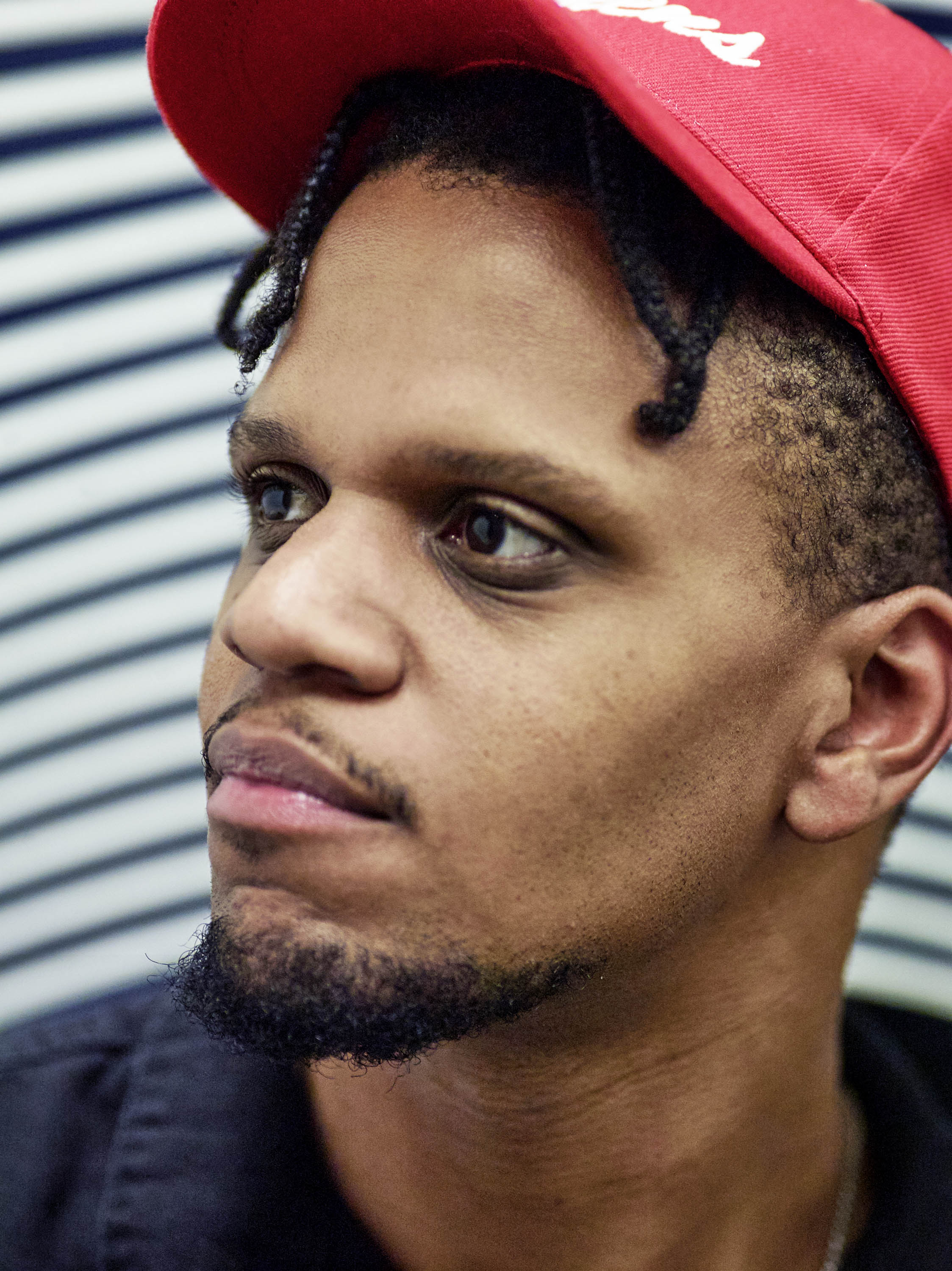
American Artist meets me at a diner that serves bad BLTs on white bread, while heartbreak anthems drone from the jukebox. Diners are one of those American signifiers that are so distinctly bizarre, yet blindly accepted. American Artist is interested in this particular type of credulity. Born and raised outside of Los Angeles, the interdisciplinary artist uses sculpture, writing, and digital space to question how power works in daily lives, often in ways that are hidden in convenience, or posed as neutral.

The artist’s first solo show, “Black Gooey Universe” staged earlier this year at HOUSING Gallery in Bed-Stuy, probed a new digital beyond. It was predicated on Graphical User Interface or “GUI,” as it’s often abbreviated to (“gooey,” phonetically), which refers to the negative space we see when we look at a computer. In the show, American considered a historical moment in the 1970s when that screen shifted from black to white, deeming white as the new neutral tone within the screen space.

“What if black screen continued to exist as a realm outside of the white screen interface? American asks. “What technologies would emerge?” So far, American largely imagines this space through sculpture, defying the “sleek look” of technology that often masks our ability to critique it. The artist’s name itself contains the tension of an exclusionary history, but is also a trap door to a new space of possibly, where American can give the slip (try searching the name on Google) while expanding a previously narrow definition of who an artist is. This begins quite literally with their moniker, a name the artist legally assumed in 2013. “I think the general archetype of an ‘American artist’ is someone like Jackson Pollock, a white male AbEx painter. So for me, changing my name was about asserting myself as a black artist who uses digital media.”










 in your life?
in your life?

